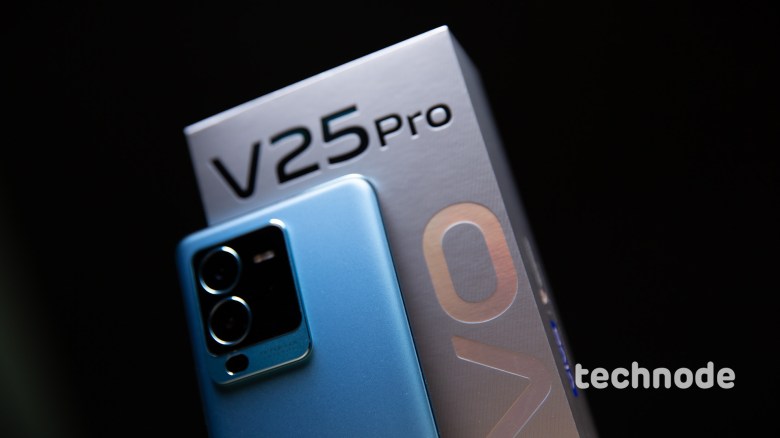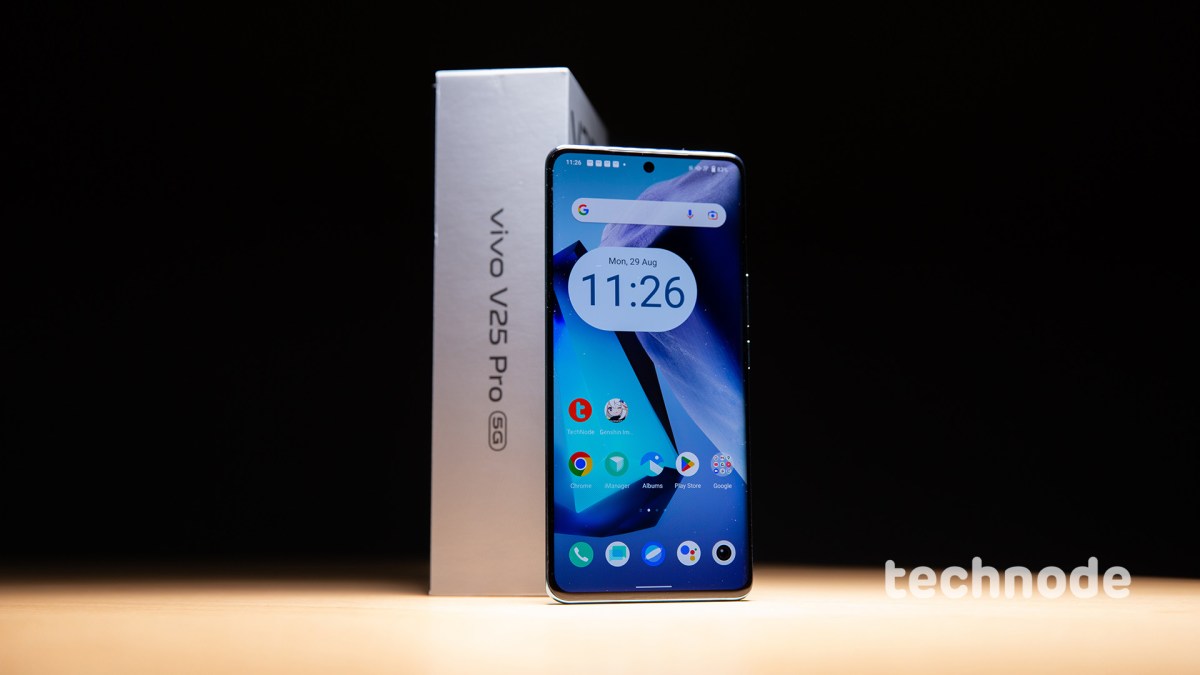Major Chinese phone vendor Vivo launched its new V25 Pro overseas last month, targeting mid-end markets. Launched in 2015 with the V1, the V series is a product line exclusive to overseas regions. The V25 series is priced from $310 to $550 and sell in more than 20 markets across Southeast Asia, South Asia, Latin America, the Middle East, and others.

The new phone has powerful cameras and a unique light-changing design on the body case. Its core performance specs are also enough for daily use. Yet there are notable shortcomings with its system user interface design and gaming performance. It’s a phone for people who prioritize good camera functions, but may not be ideal for an avid gamer on the same budget, which Xiaomi’s Redmi and Realme might have more competitive offers.
Customizable, color-changing design
The V25 Pro’s back case has a shiny effect courtesy of its processed glass material. It reflects light in a “bling-bling” way. According to Vivo, the phone adopts a color-changing technique that alters its color after exposure to sunlight or ultraviolet (UV) rays for ten minutes. The function offers users a way to customize the back case by blocking the light with stickers. The parts exposed to light will present a deeper blue, while the rest remains in the original light blue like a watermark. The eye-catching effect is temporary and disappears within minutes depending on the lighting conditions. Vivo also didn’t provide stickers or other tools to help with such customization.

The phone’s camera area in the back is well-designed, with lenses less prominent than rivals. Also, the phone adopts the popular dual-curved design, which gives it a great visual impact and makes for a good holding experience.
Realistic imagery
The Vivo V25 Pro’s cameras are among its most impressive features. The phone is equipped with triple back cameras: a 64 million pixel ultra-sensing camera, an 8 million pixel super wide-angle camera, and a 2 million pixel macro camera. The ultra-wide and macro cameras have much lower resolutions than the main one.

The cameras can capture realistic tones and deliver a natural look without being too plain.
It doesn’t over-process pictures, like up saturation and contrast levels for a more vivid and digitally sharpened look. The phone’s algorithm shows a preference for restricting highlights to keep more detail, offering a well-balanced tone. This could be a differentiator for users wanting a more realistic rendering.

The cameras also perform well in low light, capturing pictures fast and preserving details, thanks to its algorithms and optical image stabilization tech. The phone also comes with rich features for vlogging, such as dual view and fast autofocus.

Underwhelming UI
The phone comes with Funtouch 12, an Android-based system. But Vivo’s customization of this UI has a dated feel and is a bit disappointing.
Most phone brands design their own home widgets like clocks, weather, and calendar. The system’s icon designs lack contrast in color and pattern, making it hard to distinguish their functions, while the names lack shadows and darkening effects to stand out from the wallpaper sometimes.
Vivo’s theme store can upgrade the looks but will cost money.
Ample for everyday apps
Built with a mid-end processor, MediaTech Dimensity 1300, and 12 GB RAM (plus eight RAM more offered by software), the phone can handle most daily tasks with ease.
We attempt to open as many apps as possible from the Google Play store and find the phone can handle over 20 frequently used apps running in the background and can resume any of them in an instant. Due to its high-speed UFS 3.1 storage chip, the phone is also fast when opening new apps.
The phone can handle playing casual game titles that demand less performance, with no overheating or frame-dropping issues. But with a 6nm mid-end processor, don’t expect the phone to handle heavy work for extended periods.
When we played the demanding open-world game Genshin Impact with the highest setting, the CPU temperature reading from popular benchmark app Antutu shot up from 40 degrees Celsius to almost 80 degrees Celsius. The frame stability was fine, but the display emitted a lot of heat, which makes it uncomfortable to hold while playing.
Battery and charging performance is enough for daily use, too. The Vivo V25 Pro has a 4830 mAh battery with 66 W maximum charging wattage. We tested it with 20% battery life remaining, and within the first 10 minutes, it had charged to 47%. The phone took another 35 minutes to be fully charged, not as fast but still at an acceptable speed.
The battery can last reasonably long if you don’t push it too much. In the Genshin Impact testing, 50% of the battery life was gone in just two hours of gameplay. But left alone, with no heavy apps running, and the phone’s battery could last for more than two days.
Conclusion
The Vivo V25 Pro is a good budget choice as a primary phone for daily use. It has a large battery to support all-day use, considerable RAM for heavy multitasking, and good cameras that deliver realistic shots. And yes, it has a unique back case that can change color for a short period.
But it struggles to handle high-performance game titles, and some may find the system UI uninspiring. For people looking for higher performance within the same budget, the phone faces some serious competitors.
Here’s our main takeaways on the phone:
Pros
- Unique, customizable back case design
- Good cameras that deliver realistic pictures
- Large memory with extra volume powered by software
- All-day use battery life
Cons
- Dated system UI
- Slower charging speed than some rivals
- Overtly overheat when playing performance-demanding titles
READ MORE: Honor 70 review: a mid-end phone with style

